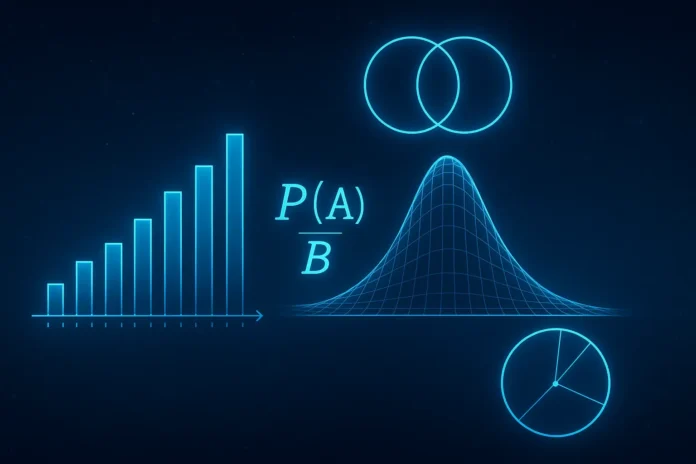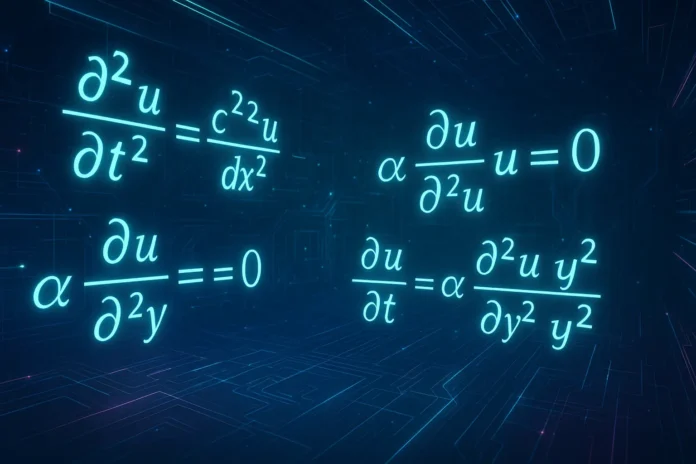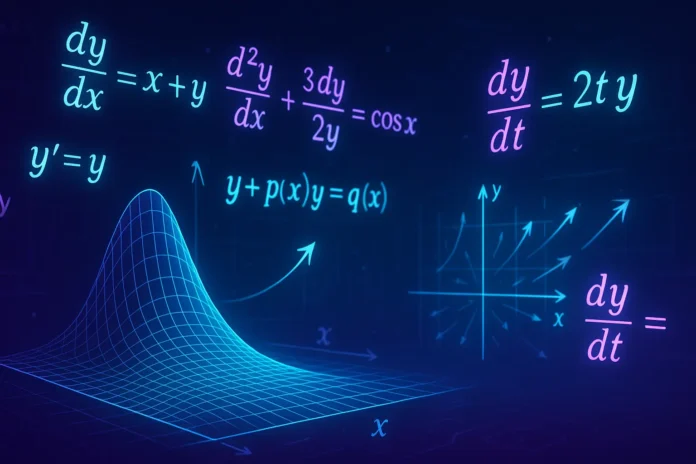Table of Contents
- Introduction
- What Are Partial Differential Equations?
- Order, Linearity, and Classification
- First-Order PDEs
- Method of Characteristics
- Second-Order Linear PDEs
- Classification: Elliptic, Parabolic, Hyperbolic
- Canonical Forms and Transformation of Variables
- The Heat Equation
- The Wave Equation
- Laplace’s and Poisson’s Equations
- Boundary and Initial Conditions
- Separation of Variables
- Fourier Series Solutions
- Green’s Functions and Integral Methods
- Numerical Methods for PDEs
- Applications in Physics and Engineering
- Conclusion
1. Introduction
Partial Differential Equations (PDEs) involve multivariable functions and their partial derivatives. They are the natural language of physics — describing phenomena from heat and sound propagation to electromagnetism and quantum mechanics.
2. What Are Partial Differential Equations?
A PDE relates a function \( u(x_1, x_2, …, x_n) \) to its partial derivatives:
\[
F\left(x_i, u, \frac{\partial u}{\partial x_i}, \frac{\partial^2 u}{\partial x_i \partial x_j}, \dots \right) = 0
\]
They generalize ODEs to functions of several variables.
3. Order, Linearity, and Classification
- Order: Highest derivative present
- Linear: Linear in \( u \) and all derivatives
- Quasilinear: Linear in highest derivatives only
- Nonlinear: Nonlinear in derivatives or the function
Example:
- Linear: \( u_{xx} + u_{yy} = 0 \)
- Nonlinear: \( u_t + u u_x = 0 \)
4. First-Order PDEs
General form:
\[
a(x, y, u) \frac{\partial u}{\partial x} + b(x, y, u) \frac{\partial u}{\partial y} = c(x, y, u)
\]
Methods:
- Method of characteristics
- Change of variables
5. Method of Characteristics
Converts PDE into a system of ODEs:
\[
\frac{dx}{a} = \frac{dy}{b} = \frac{du}{c}
\]
Solves for characteristic curves along which the PDE reduces to an ODE.
6. Second-Order Linear PDEs
General form in two variables:
\[
A u_{xx} + B u_{xy} + C u_{yy} + D u_x + E u_y + Fu = G
\]
The type of PDE depends on the discriminant \( B^2 – 4AC \):
- Elliptic: \( B^2 – 4AC < 0 \)
- Parabolic: \( B^2 – 4AC = 0 \)
- Hyperbolic: \( B^2 – 4AC > 0 \)
7. Classification: Elliptic, Parabolic, Hyperbolic
- Elliptic: steady-state (e.g., Laplace’s equation)
- Parabolic: diffusion-type (e.g., heat equation)
- Hyperbolic: wave-like (e.g., wave equation)
8. Canonical Forms and Transformation of Variables
PDEs can often be simplified by change of variables:
- Elliptic → \( u_{\xi\xi} + u_{\eta\eta} = 0 \)
- Hyperbolic → \( u_{\xi\eta} = 0 \)
This reduces complexity and aids analytical solutions.
9. The Heat Equation
Describes temperature evolution:
\[
\frac{\partial u}{\partial t} = \alpha \frac{\partial^2 u}{\partial x^2}
\]
Parabolic; models diffusion of heat, particles, etc.
10. The Wave Equation
Describes wave propagation:
\[
\frac{\partial^2 u}{\partial t^2} = c^2 \frac{\partial^2 u}{\partial x^2}
\]
Hyperbolic; solution involves traveling waves and d’Alembert’s formula.
11. Laplace’s and Poisson’s Equations
- Laplace: \( \nabla^2 u = 0 \)
- Poisson: \( \nabla^2 u = f(x, y) \)
Elliptic; describe electrostatics, fluid flow, and potential theory.
12. Boundary and Initial Conditions
Well-posed problems require:
- Initial condition for time evolution
- Boundary conditions (Dirichlet, Neumann, or Robin) on spatial domain
13. Separation of Variables
Assumes:
\[
u(x, t) = X(x)T(t)
\]
Reduces PDE to ODEs in separate variables, solvable via eigenfunction expansions.
14. Fourier Series Solutions
Periodic boundary conditions allow expansion in sine and cosine:
\[
u(x, t) = \sum_{n=1}^\infty A_n(t) \sin\left(\frac{n\pi x}{L}\right)
\]
Used to solve heat and wave equations on bounded domains.
15. Green’s Functions and Integral Methods
A Green’s function \( G(x, x’) \) solves:
\[
L G(x, x’) = \delta(x – x’)
\]
Allows us to write the solution as an integral:
\[
u(x) = \int G(x, x’) f(x’) dx’
\]
Powerful for inhomogeneous boundary value problems.
16. Numerical Methods for PDEs
When analytical solutions are not possible:
- Finite difference methods
- Finite element methods
- Spectral methods
Used in simulations across physics and engineering.
17. Applications in Physics and Engineering
- Electromagnetism: Maxwell’s equations
- Quantum mechanics: Schrödinger equation
- Fluid dynamics: Navier–Stokes equations
- Acoustics: Helmholtz equation
- Heat transfer: heat equation
18. Conclusion
Partial Differential Equations are central to modeling and solving multidimensional, dynamic physical problems. Understanding their classification, solutions, and applications is critical for modern physics, engineering, and applied mathematics.
From electrostatics to quantum fields, PDEs provide the mathematical lens through which we study and simulate the world.






